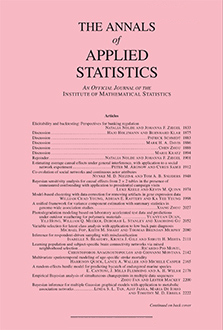Abstract
Could John Kerry have gained votes in the 2004 Presidential election by more clearly distinguishing himself from George Bush on economic policy? At first thought, the logic of political preferences would suggest not: the Republicans are to the right of most Americans on economic policy, and so in a one-dimensional space with party positions measured with no error, the optimal strategy for the Democrats would be to stand infinitesimally to the left of the Republicans. The median voter theorem suggests that each party should keep its policy positions just barely distinguishable from the opposition.
In a multidimensional setting, however, or when voters vary in their perceptions of the parties’ positions, a party can benefit from putting some daylight between itself and the other party on an issue where it has a public-opinion advantage (such as economic policy for the Democrats). We set up a plausible theoretical model in which the Democrats could achieve a net gain in votes by moving to the left on economic policy, given the parties’ positions on a range of issue dimensions. We then evaluate this model based on survey data on voters’ perceptions of their own positions and those of the candidates in 2004.
Under our model, it turns out to be optimal for the Democrats to move slightly to the right but staying clearly to the left of the Republicans’ current position on economic issues.
Citation
Andrew Gelman. Cexun Jeffrey Cai. "Should the Democrats move to the left on economic policy?." Ann. Appl. Stat. 2 (2) 536 - 549, June 2008. https://doi.org/10.1214/07-AOAS150
Information





